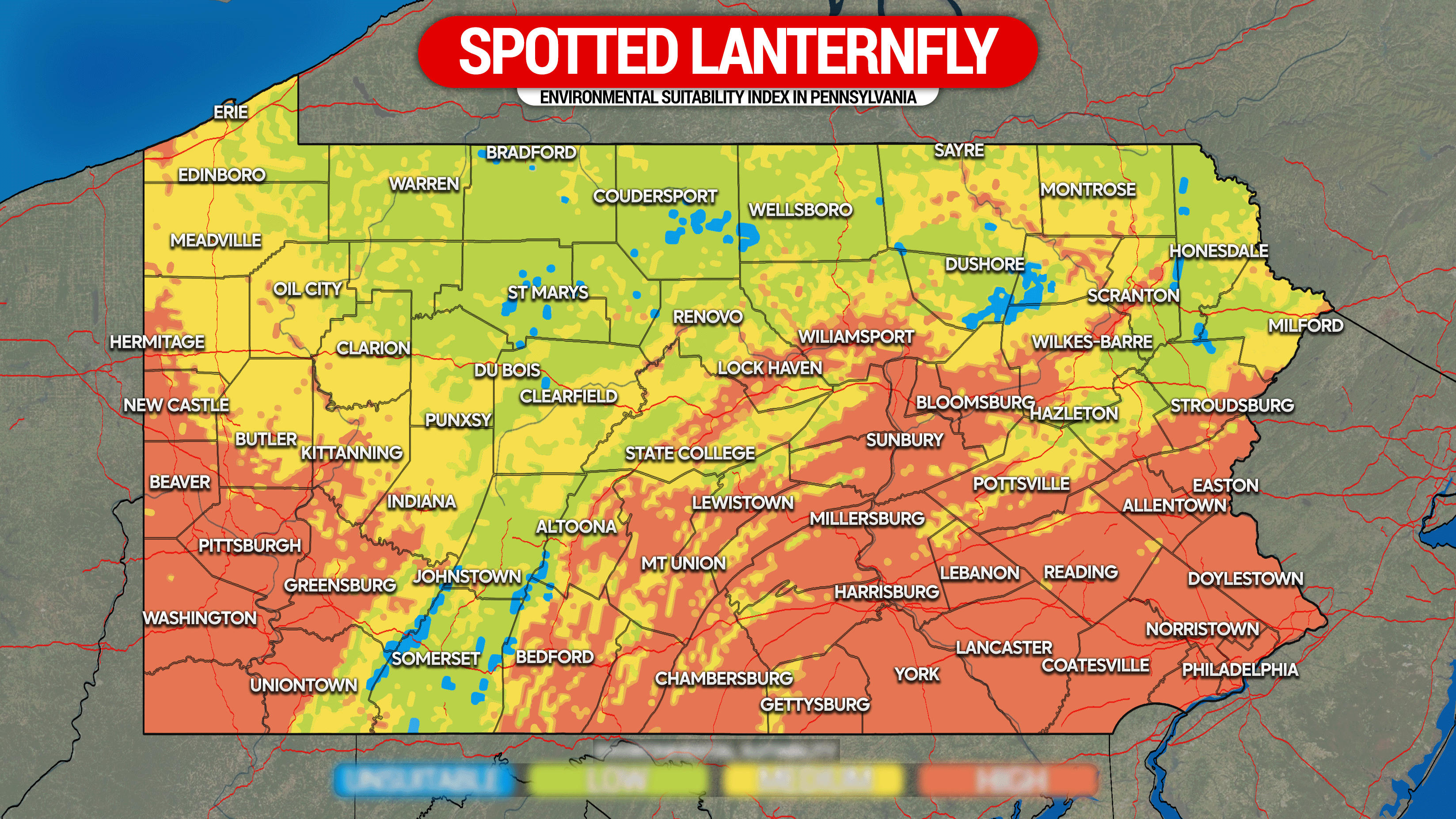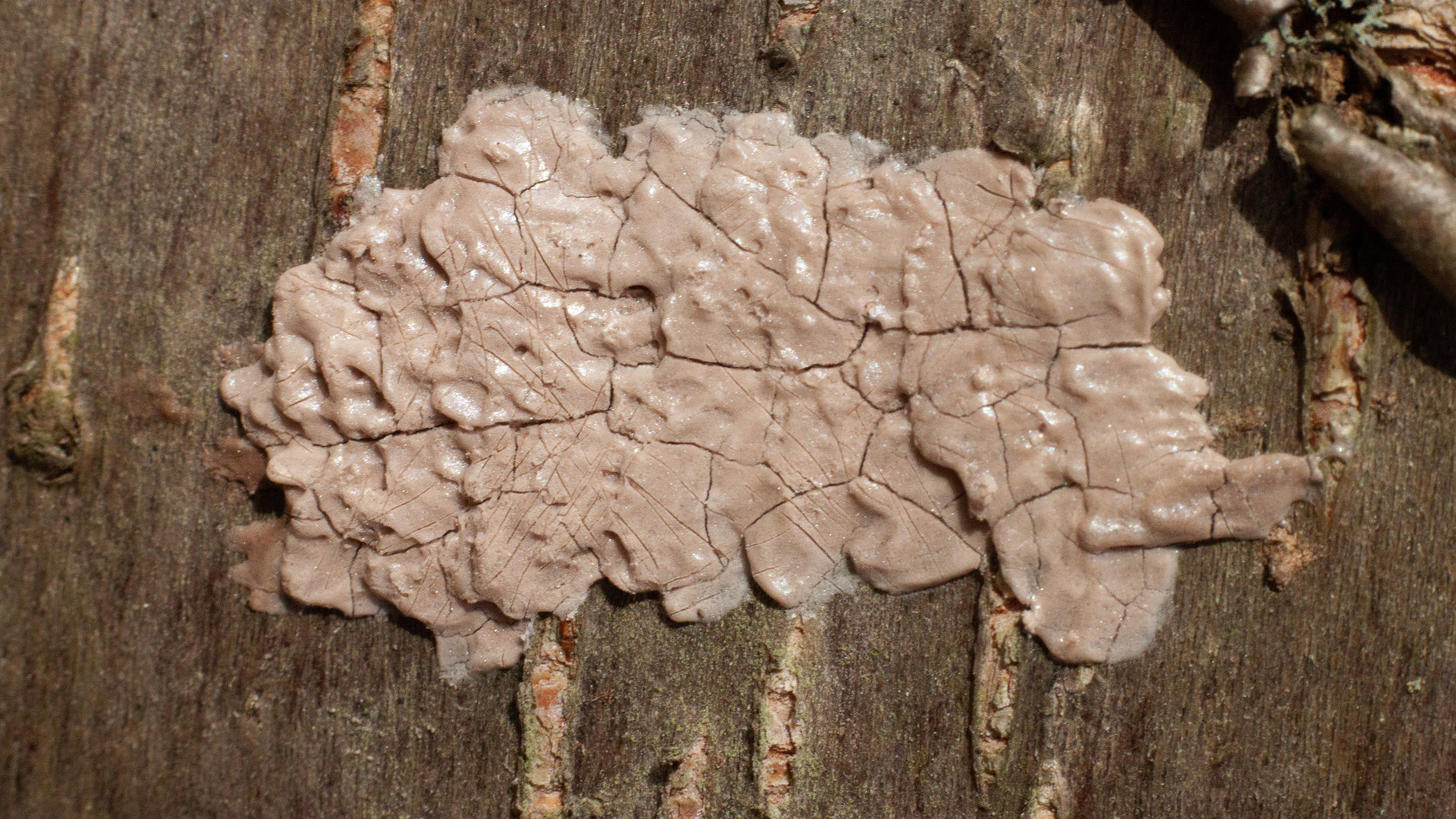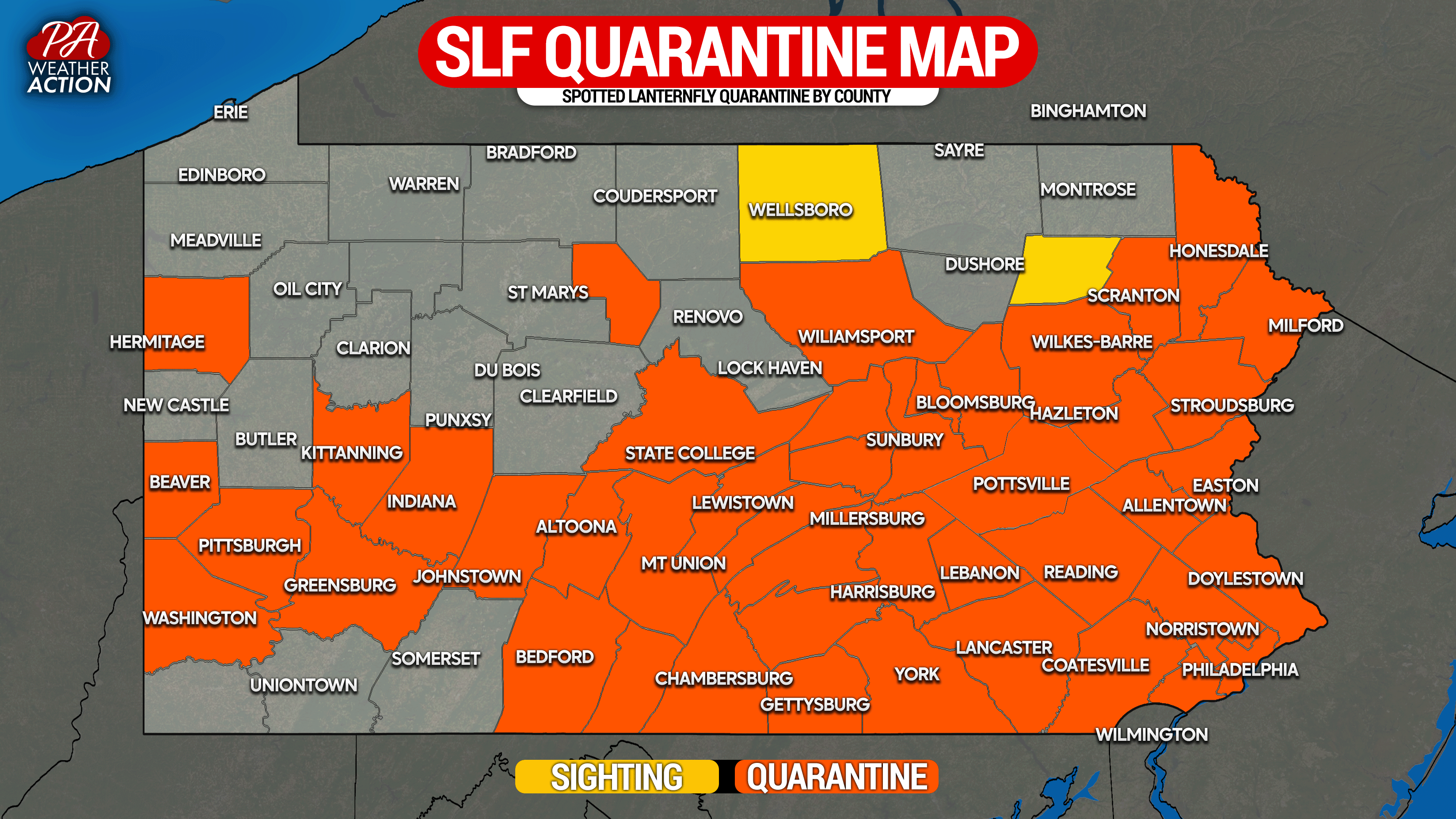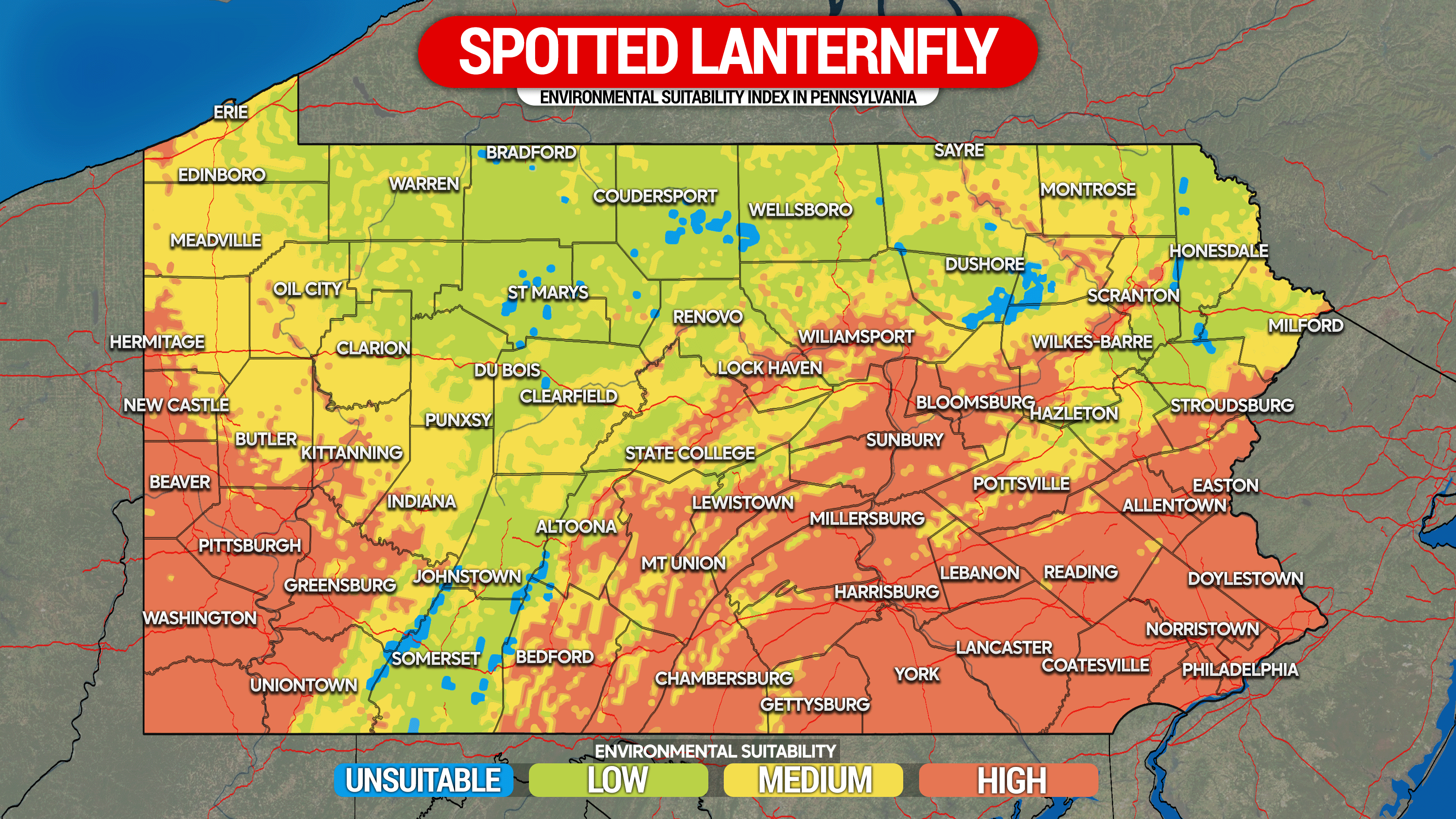The spotted lanternfly has taken much of the Mid-Atlantic by storm this year, but parts of Pennsylvania have been dealing with the invasive bug for a while now. Native to China, the spotted lanternfly was first spotted in the United States in Berks County, PA in 2014 and has spread very quickly due to factors including optimal temperatures in the area and the rate of which they reproduce. The average female spotted lanternfly will lay 1-2 egg masses, each containing 30-60 eggs.
The surface of these egg masses appears as dried mud, typically on trees, outdoor furniture, vehicles, etc. Be sure to do an inspection of your property for these. Also, if you’re traveling this Fall, check everything you’re bringing, including your vehicle, for these egg cases. If you find any, scrape them into a plastic container of rubbing alcohol, seal it, and dispose of it. Below is a picture of a spotted lanternfly egg mass.
Spotted lanternflies have not been spotted everywhere in Pennsylvania. These areas where they have yet to infest include a large section of Northern Pennsylvania, as well as a few southwestern counties. Below is the latest map as of September 25, 2022, depicting where a spotted lanternfly quarantine is present, and where sightings of the bug have occurred.
Spotted lanternflies may cost Pennsylvania’s economy $328 million annually in the near-future, as well as 2,800 jobs, predicts economists at Penn State’s College of Agricultural Sciences. This is because spotted lanternflies feed on 70 plant species, including fruit trees, ornamental trees, woody trees, vegetables, herbs, grains and vines. In our area, apple trees, peach trees, and grapevines are commonly fed on, which is a major issue as Pennsylvania is fourth in apple production in the United States, fifth in peach production, and fourth in wine production.
While humans can certainly make a dent in the spotted lanternfly population, the only thing stopping the invasive species from spreading absolutely everywhere in the future is environmental suitability. As mentioned, adult spotted lanternflies die during the first frost, however their eggs do not. Spotted lanternfly egg masses can survive on surfaces as cold as 12-14 degrees Fahrenheit. This does not mean the eggs will die as soon as the air temperature reaches that 12-14 degree threshold, because the surface the egg mass is attached to must as well.
In Pennsylvania, the environmental suitability of spotted lanternflies greatly varies. Below is a map displaying the environmental suitability for spotted lanternflies.
Click here to view the interactive version of the map displayed above.
Since temperature extremes greatly impact the suitability of a region, higher elevations of Pennsylvania are much less suitable for spotted lanternflies. These areas average several occurrences a winter of temperatures that kill spotted lanternfly egg masses.
Unfortunately the same cannot be said for the state’s valleys, where temperatures rarely drop below 12-14F for any longer than a few hours on the coldest days of winter. This will result in the spotted lanternfly egg masses surviving the winter and having an even larger season in 2023.
The good news is, we have six months from the first frost of the fall to the last frost of the spring to kill as many spotted lanternfly egg masses as possible. And as many of Pennsylvania’s valleys are not densely forested, their egg masses may be easier to spot. How to spot and discard of them is explained earlier in the article.
Like our page if you haven’t yet here.
Please share this article to pass along this information to others across the state who can also take part in the efforts to reduce the spotted lanternfly population this winter.







You must be logged in to post a comment.